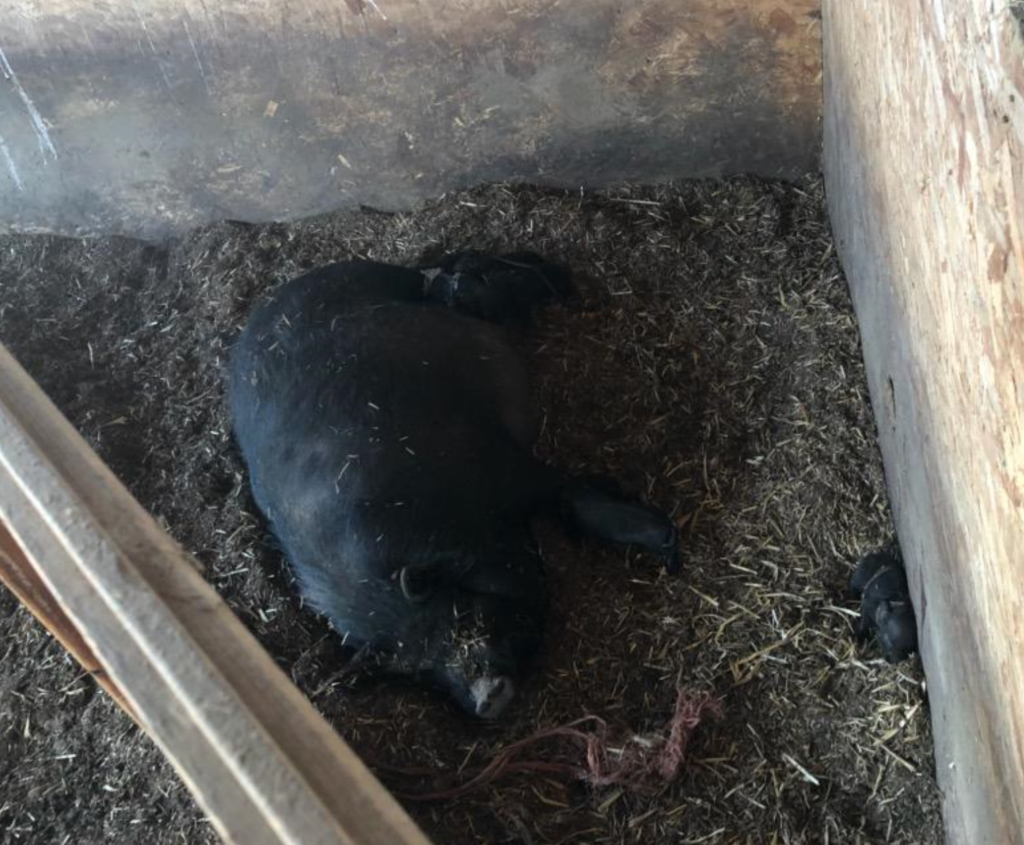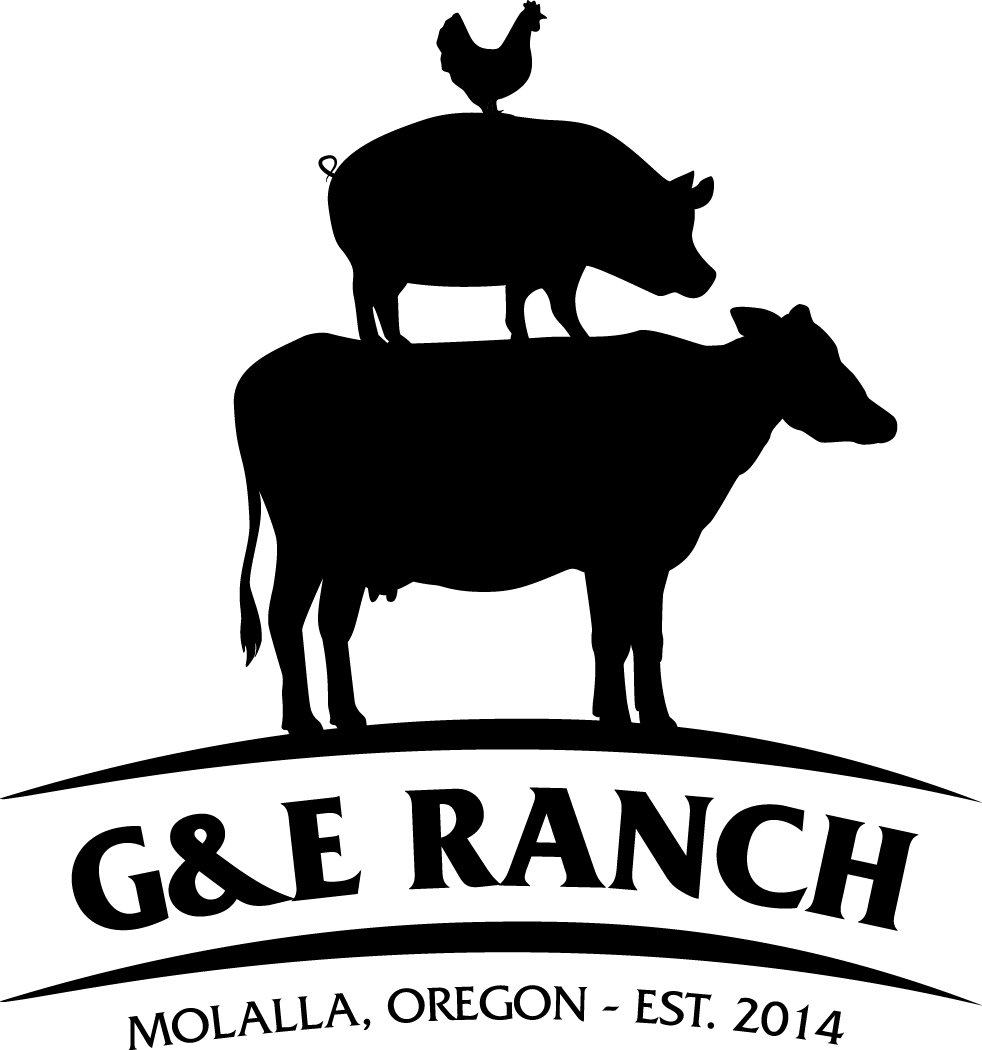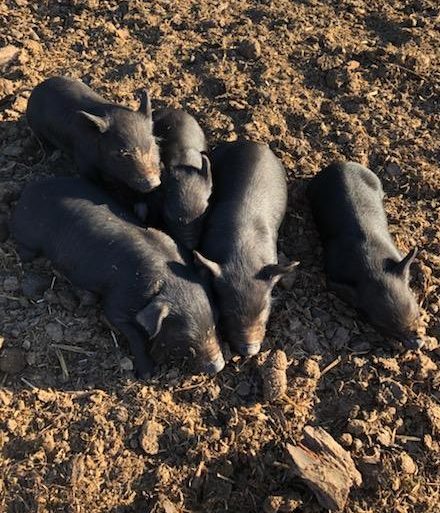When we first started, we bought three piglets. They were kept in a pen (which has now become the duck pen). To eat like a pig is an understatement. They would eat and eat and eat… whatever you gave them. They were confined to about 200 SF, and over time, it began to smell. Thankfully, that was just about time for them to be harvested (around six months). Fun fact: these first hogs were cooked whole for our wedding. After that, we had a neighbor complain about the pigs being too close to the well, thinking that they could contaminate the water three hundred feet down… I do not think that would happen, but per their request, we moved the next batch of four Berkshire/Hampshire piglets to the upper portion of our property. Another six months passed, and those hogs were harvested. The next day, another neighbor came and talked to us. Unfortunately, pig pens stink, and sometimes the wind would blow the smell right through his property. Thankfully, we were able to respond and say “we have no more hogs”, but at the same time, we knew we had to figure a few things out. We aren’t the first people to raise hogs and have a smell issue. It turns out that it is cost and time prohibitive to eliminate or even significantly reduce the smell of pig pens, particularly for the size of our operation.
We did some research and figured we would try heritage pasture pigs called American Guinea Hogs (AGH). They do not root like today’s traditional hogs, so you can let them be out in the pastures with the other animals and not destroy them. This also means they do not need to be feed as much or continuously, and they don’t have to live in a confined pig pen. On the other side though, the pasture pigs grow slower, do not get as big, are marginally fattier, and do not produce high-quality bacon. Greg and I aren’t big fans of bacon, but a lot of people are. You may ask, how can a pig not be good for bacon? Well, over the last century, the industry has all but forgotten about heritage hogs and breed today’s hogs to be leaner, grow faster, grow bigger, be more efficient, have better bacon, etc. Many small farmers though aggressively defend heritage hogs for their flavor, their fat content, nurturing skills and their easy nature with people and the environment.

One thing that we began to discover over trial and error is that these animals eat a lot of food, regardless of type! The cost of their food, even when they are eating pasture grass, is much more than we can get for the meat. Early in the process, Greg did some investigating at every store, produce stand, restaurant, sub shop, etc. and could only find a donut shop on his way to work that was willing to give him all day-old donuts. He thought, ‘great!!’. Well, that lasted about three months, and we could not take it anymore. There is one thing if it is just dumping a garbage bag of food in the animal’s trough, but it is another when there are hundreds of pieces of parchment paper in there that has to get pulled out before you dump the bag to the pigs. Let me tell you that was a gross, sticky mess and not even good for the pigs or us! When that free food source ran its course, Greg resorted to 100% pasture grass and local milled grain in 50 lb bags from Union Mills.
Over the years we have had several batches of pasture pigs born on the Ranch. At times, we have had more than we wanted at a time, like six adults ready to get butchered, four medium-sized, and a couple mommas with about twenty babies. Yes, that is a lot. That happened to us more than once because somehow a male got missed when the other babies were neutered and impregnated a female. You cannot know for sure if a female is pregnant, so you hope when you harvest not to find babies inside (kind of gross and sad I know). There were times we were planning on butchering soon when another batch of babies would be born. I guess it was a way for a momma to live another day because new moms were needed to take care of their young.

We have had litters as small as five and as large as a dozen. Usually, there are a few casualties in the first couple weeks. It is always hard to see. Thankfully, the only time we completely had a mother totally reject her entire litter, we had another nursing momma take over.
After that episode, Greg learned to be more careful about watching for young males. Castrating male piglets or full-sized boars isn’t easy or fun by any means, and if it is done incorrectly, the pig will die shortly thereafter. Greg learned the hard way, and a number of piglets and full-size boars were lost.
At this time, we are on our last four pasture pigs, four years after we started. They are scheduled to be harvested within a week, and at that point, we are taking a break from hogs. The main reason is that they aren’t financially sustainable. They simply cost more in feed than what they can sell for. That also doesn’t take into consideration the time, use of property, and equipment necessary to raise them. We have occasionally received spent brewery grains from a local brewery or old food from Gleaners to feed them, but until we have a reliable, convenient, consistent and inexpensive food source that can supplement manufactured grain, we are going to put hogs on hold. It was fun while it lasted, and hopefully in the future, we will try again with a different breed.


Recent Comments